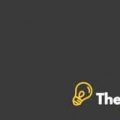Resuming Internationalization At Starbucks Case Study Solution
Bargaining Power of Supplier:
The bargaining power of suppliers in the coffee industry is considered to be moderate. As the producers of the coffee beans are farmers, and the large number of suppliers are available in the market. However, the quality of the coffee beans also matter. The buyers purchase coffee beans in a large quantity due to high consumption rate, which is why the bargaining power of suppliers is considered to be moderate.
Threat of Substitutes:
The threat of substitute in the coffee industry is also considered to be moderate. As the numerous number of substitutes of coffee is available in the industry, such as tea, juices, sparkling water, fresh juice& smoothie kiosks, soft drinks, energy drinks and other beverages. Although numerous kinds of coffee are available in the market with different processing method and flavors. However, in the United States and some of the other countries the consumers are habitual of the coffee in their daily life, and for them the brand and quality of coffee also matter. All these reasons make moderate threat of substitutes in the coffee industry.
Rivalry among Competitors:
The rivalry among the competitors in the coffee industry is considered to be high. As the coffee industry is composed of various competitors, and differentiation among the products is quite low. While the consumption of the coffee is increasing worldwide, and more than 500 billion cups are consumed each year.
Financial Analysis
In the financial analysis, different ratios of the Starbucks and McDonalds are taken. The data of 2008 and 2009 are taken for comparison. The industry average is taken by the sum of all three competitors’ ratios. The different ratio includes current ratio, profit margin, debt to equity ratio long term debt to capital ratio, gross margin, return on asset and return and equity. The debt to equity ratios shows the debt paying ability of the companies, while the margins and return ratios show the profit earning abilities of the companies.
Current Ratio:
The Starbucks current ratio was 0.08 and 1.29 in 2008 and 2009 respectively. In 2008, the company did not have enough current assets to pay its liabilities, but in 2009 the company generated enough current assets. Although the competitors’ current ratios are almost similar which means that the competitors can also pay their debts easily.
Debt Ratio:
The Starbucks debt ratio was 18% and 15% in 2008 and 2009 respectively. In comparison with McDonalds and Industry Average, Starbucks’ most of the assets are based on the equity financing. Avery less portion of debt is incorporated in in company’s assets financing.
Leverage Ratio:
The Starbucks does not employ debt as their financing. Most of the financing is equity based. As the financial leverage of its competitor is high, which means that the competitors have the higher risks of failure in comparison to Starbucks.
Profitability Ratio:
The Starbucks’ profitability ratios are higher than the industry average and as well as its competitors’. Starbucks had earned almost 56% of gross profit margin in the fiscal year 2009. The Starbucks financial performance is much better than its competitors, and the company is earning higher profits. The company is using its investment efficiently.
Alternative solutions
Option-1: Go with Internationalization
Pace of Internationalization refers to the growth of international stores and speed of opening new stores/cafes. The company could consider both chains and franchise in the pace of internationalization. The pace of Internationalization is considered to be low to moderate in the market as Starbucks already has various cafes in domestic as well as in the international market. The company has to open up a few more cafes if required. The company could also use product development and market development strategies. The pros and cons of the pace of internationalization are as follows:
Pros:
- The profit will increase as the company will concentrate on the existing stores.
- It will reduce the competition of the market.
- It will enhanced the core competencies.
- Understanding of the demands of different cities.
- Helps to maintain different culture in different countries.
- Increases the consumer base by offering a variety of products.
Cons:
- Requires high capital in order to open new cafes.
- Maintaining the standard in different countries to avoid any compromise on the brands’ recognition and reputation.
- It easier to be imitated by the competitors.
Option-2: Status Quo with Aggressive Promotional Strategies
Another alternative option for Starbucks could be maintaining its current number of stores with no domestic and international expansion. Here the company is suggested to maintain its current stores by implementing aggressive promotional strategies to attract a larger number of consumers and achieve a potential revenue growth.
Pros:
- Provides information to the consumers about various existing products.
- Information about the different facilities and services offered by the company to their consumers.
- Increasing the consumer base and retaining the potential consumers.
- Creates a brand perception in the consumers’ minds.
Cons:
- Requires an additional cost for advertising.
- Easier to imitate the information about the products by the competitors and use the same strategy as their own.
Option-3: Expansion in Domestic Markets
Starbucks could also pursue an expansion in the US markets rather than a geographical expansion in order to avoid any kind of political and other external environmental risks, which increases the chances for the company to achieve a potential revenue growth. The expansion in the local markets could increase the revenues for the company, with less amount of risks and investments.
Pros:
- Lower chances of risks.
- Lower amount of investment requirement.
- Expertise in the local market.
- Low threat of foreign competition.
- Familiarity with the culture and the consumer preferences.
Cons:
- Low amount of revenue growth as the company already has a larger number of cafes in local markets.
- Economic crisis can lead to the wastage of potential investment with low purchasing power and consumer preferences towards products like coffee.
Recommendation
On the above analysis it is recommended that the company should use the low pace of internationalization. Although, the company has recently closed some of its coffee shops due to the economic recession. It is recommended that the company should increase its product line with inter nationalizations in order to improve its profit generation. The company should go for internationalization by having joint ventures, which has the higher potential to be proven much profitable for the company regarding the revenue generation. The strategy will also help in reducing the cost incurrence. However, because of the increase in the coffee consumption throughout the world; the company has an already available opportunity to increase its product line in order to retain the potential consumers. Although, the increase in the prices of coffee bean may increase the price of the coffees and other caffeinated drinks offered by Starbucks, but by controlling other cost factors by having more focus on the existing cafes rather than opening new cafes may help the company to maintain its existing cost of coffee products...........
This is just a sample partical work. Please place the order on the website to get your own originally done case solution.











